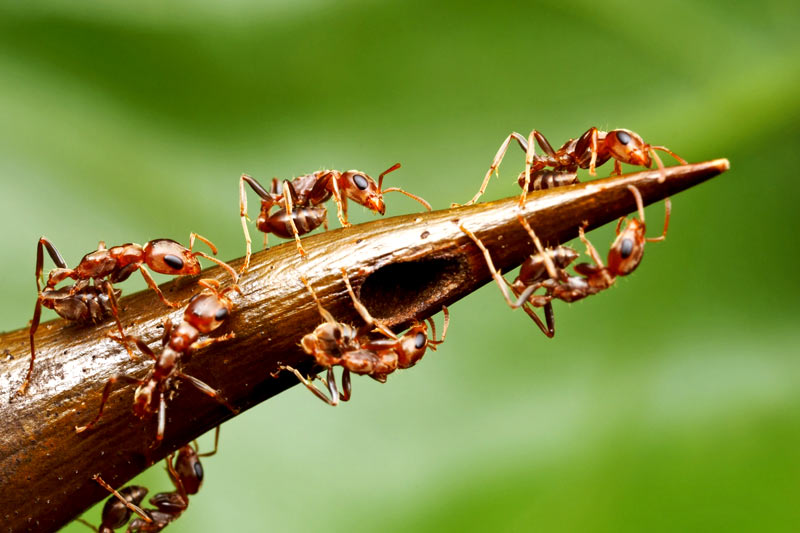Ants are everywhere. You can’t escape them, and you don’t want to. Ants are not just a part of the ecosystem, they are an important part of it, creating complex societies that have evolved over millions of years.
Ants have been around for at least 100 million years, but they weren’t always as dense in numbers as they are today. In fact, it wasn’t until about 80 million years ago that ants became so prevalent. Since then, their population has exploded, with estimates putting their current global population at 15 quintillions (15 followed by 18 zeros). That’s over 1 billion times more ants than humans on Earth.
Ants were able to become such successful organisms because they live in colonies: groups of ants that work together to survive and thrive while other species struggle to survive on their own. Each colony has its own queen who lays thousands of eggs each year; these eggs hatch into larvae which develop into pupae before turning into adult workers who go out into the world and gather food for their queen and themselves every day.
How Big Is 20 Quadrillion Ants?
20 quadrillion is equivalent to 1,000,000,000,000,000 or 1 quintillion.
To put that number in perspective, 20 quadrillion ants would be enough ants to cover the entire surface of the planet Earth with a layer of ants three feet deep. It would take 833 times the amount of ants currently living on Earth to reach that level. This would be more than 100 quadrillion ants.
It’s also worth noting that this number is not accurate because it assumes each ant weighs exactly one gram. In reality, ants vary in weight from 0.001 grams to 14 grams, which means you’d need anywhere from 2 trillion to 3 billion quadrillion ants if they all weighed two grams each.
What Is the Total Mass of Ants on Earth?
Ants are among the most abundant animals on Earth and they are everywhere. They live in every habitat, from tropical rainforests to deserts, and they can be found in every continent except Antarctica.
Ants also have a huge impact on their environments. They disperse seeds and spread nutrients throughout their territories, which means that they help plants grow. Some species even cultivate fungi that provide food for other ants.
The total mass of all ants on Earth has been estimated at 1 to 10 million tonnes (1-10 billion kg). This is a very rough estimate because there are so many different species of ants, each with its own weight range.
In terms of biomass (total weight of organisms), ants are second only to humans in terms of the total biomass on Earth. They have about half as much biomass as all humans combined.
Do Giant Ants Exist?
There are many different species of ants, some of which are quite large. The largest ant in the world is the Titanomyrma giganteum, a species that can reach up to 3 inches in length. This particular ant is native to New Zealand and Australia, but it has also been found in tropical forests in Asia and Africa.
The most common type of giant ant is known as Oecophylla smaragdina. These ants are native to New Guinea and Australia and can grow to be as large as 1 inch long. They are also known as weaver ants because they build large nests that resemble hanging baskets or bird’s nests.
The biggest difference between these two types of giant ants is their body shape; Titanomyrma giganteum has a rounder head than Oecophylla smaragdina does, which makes them look more similar to termites than other types of ants.
Do Ants Have the Biggest Brains?
Ants are known for their ability to work as a team, but what about their individual intelligence? Do ants have the biggest brains?
Technically, no. Ants do not have the largest brains of all animals. But they do have some of the largest in relation to their body size, and that may be more important than sheer size.
Ants have large eyes and excellent vision, which helps them navigate through tight spaces and find food. They also have an impressive memory, which helps them remember where they put food.
Scientists say that ants’ ability to learn quickly is unique among insects and other small animals. They can even solve complex puzzles and make decisions based on social cues or group communication.
So while you might not want to compare an ant’s brain to yours (or mine), it’s still fascinating to think about how these little creatures are able to accomplish so much with so little.
In Conclusion,
The number of ants in the world is a lot higher than you might think.
In fact, if you took all the ants on Earth and placed them end-to-end, they would stretch around the world almost five times.
If you wanted to know how many ants there are on Earth, there’s no way to know for sure. But we can make some educated guesses based on what we know about ant colonies and their habits. There are more than 12,000 known species of ants, and they live in almost every environment on Earth, except for Antarctica and Greenland. They can even survive in temperatures as low as -4 degrees Fahrenheit (-20 degrees Celsius).
Ants are social insects that live together in colonies. They work together to take care of each other and their young, with some species even caring for their own dead members.
